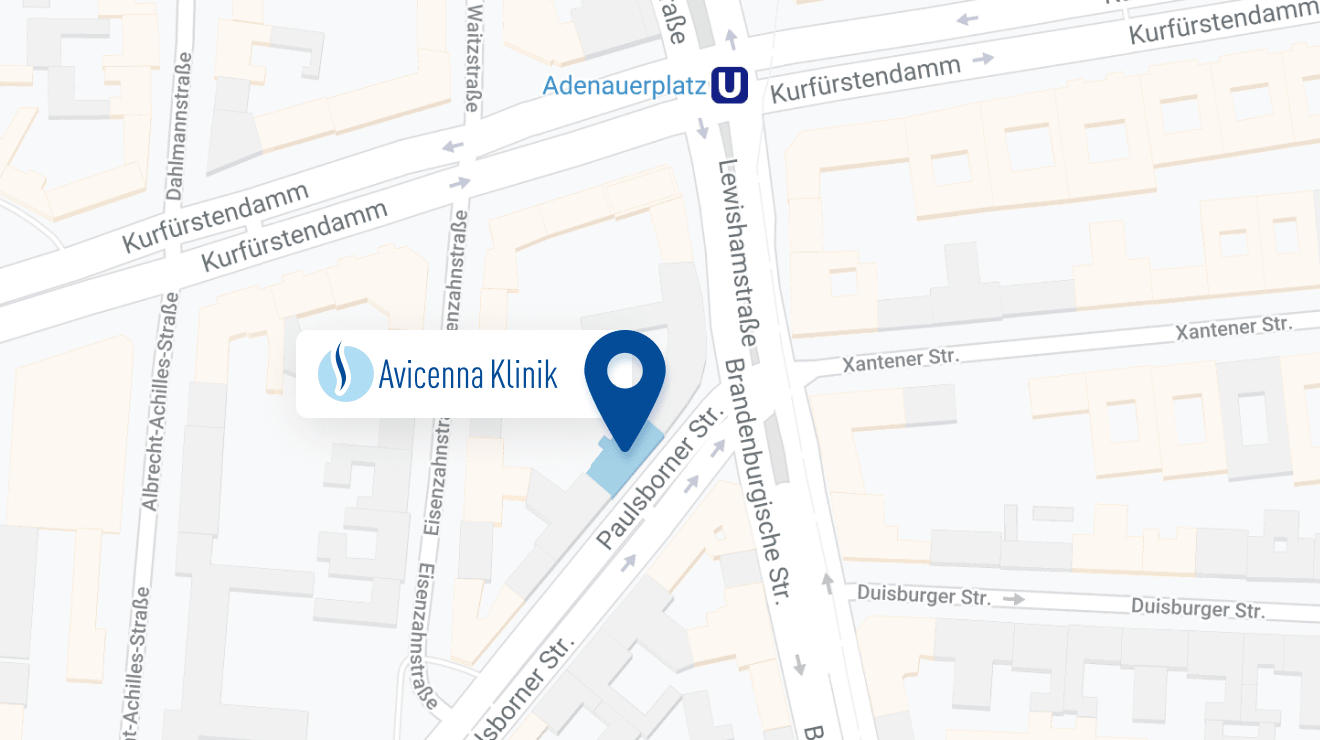What is a vertebral body replacement?
As long as you are healthy, your spine will cause you no problems at all. You know, the spine is very special. The vertebral bodies, which are connected by tight ligaments, allow us to walk upright. The spine is flexible - it can bend and stretch, and it carries a heavy burden - our head. An incredibly static task that fulfills her - ideally - for a lifetime. Our spine is made of 24 vertebrae, plus the sacrum and tailbone (which are grown together and therefore immobile) and 23 intervertebral discs. The intervertebral discs are established between the vertebral bodies, they are the shock absorbers of our spine.
When it comes to the need for a vertebral body replacement, we remove one or more vertebrae and replace them with titanium artificial vertebral bodies. The aim of such an intervention is the stabilization and restoration of the original profile after the removal of the affected segment. Failure to do so may result in the destruction of the vertebral bodies and subsequent instability. The vertebral body replacement makes it possible for us to perform a complete replacement of a vertebral body. So we can - for example, in order to relieve the spinal canal after a break - remove a complete vertebral body and replace it with a titanium implant.
When is it necessary to replace a vertebral body?
What bring us (other than accidents) to think about a vertebral body replacement?
For example, a tumor can be a trigger. Spinal tumors are those tumors that grow in the area of the spinal canal and can invade/destroy the vertebra. This leads to instability of the spine - but also to considerable pain. Tumors can affect the functions of the spinal cord and cause neurological deficits. If they are not treated, they lead to permanent damage of the spinal cord – causing in turn and in the worst case: paraplegia. Most tumors (about 50%) are found in the area of the thoracic spine; the remaining tumors develop in the area of the cervical and lumbar spine. Whenever you feel pain in these areas, please consult a specialist (hurry up if emotional disturbances are already noticeable).
Infections, inflammation of the spine (the medical term for this is spondylitis), can also be triggers that lead to vertebral body replacement surgery. Spondylitis is not particularly common, but you should always be vigilant if you feel pain in the cervical, thoracic, or lumbar spine, especially if accompanied by radiating pain in the neck, arms, and legs. Alarm signals also include elevated temperatures and night sweats. The vertebra is then unstable and often collapses.
Osteoporosis is the disease which mostly affects the elderly (women are particularly affected because they start losing bone mass sooner than men) because, as we already know, the density of our bones decreases with age. For the determination of bone density, there are very special values - if they are below, we speak of osteoporosis. If bones are not so firm, they can easily cause the so-called osteoporosis fractures ... which in turn as the very last option can lead to the need of a vertebral body replacement.
A vertebral fracture of various causes is the most common reason for vertebral body replacement because, as already mentioned, vertebral fractures can be caused by vertebral tumors, inflammation and osteoporosis.
Sometimes the vertebral body is severely affected by wear, the so-called spondylosis. (This is a collective term used for degenerative changes of the vertebral bodies). Spondylosis is not always associated with back pain - but if you feel it, it is usually very violent and affects the whole spine. The neck and the back are most affected on the so-called pain scale. Again, whenever you feel the first signs, go to the specialist. The faster the action is taken, the less the consequences will be.
Vertebral body replacement - operation course
Vertebral body replacement surgery is considered a 'big' operation. After all, defective vertebral bodies are replaced by implants. Such an intervention takes about two to four hours.
Cervical spine: Via a cut on the front neck and with the help of a special microscope we reach the affected vertebrae. The damaged or destroyed vertebrae and the adjacent intervertebral discs will be removed. If fragments of the affected vertebrae are located in the spinal canal they will be removed too. Thus, the spinal canal is enlarged and the spinal cord is free. Between the above and the underlying vertebra, the artificial vertebrae is introduced and slightly tensioned. This is how the "new" vertebrae are fixed. A titanium plate is additionally placed on the front surface of the above and below vertebrae and fixed with matching screws. Your own body bones or bone replacement materials will be also used to guarantee more stability. It is the doctor who decides whether the dorsal fixation (posterior stabilization with screws and rods) of the vertebrae is necessary or not. Already the first post-operative day, patients can be mobilized.
Thoracic spine: While the patient lies in a prone position, the dorsal fixation of the first two upper and lower vertebrae (1-2) is performed dorsally (back-side) with the placement of rods and screws.This can be done percutaneously. Then the patient is moved sideways. Through a skin incision on the side of the spine along the course of the rib we reach the thorax and the lateral part of the damaged vertebrae. Then the affected vertebra (or several vertebrae) and the associated intervertebral discs are removed. This procedure will relieve the spinal canal and the spinal cord. Thereafter the titanium artificial spine is implanted above and below between the healthy vertebrae. By lateral plating or by additional introduction of your own or artificial bone material, we achieve more stability. Thoracic drainage acts as a pressure balance in the chest and is removed after a few days.
Lumbar spine: The operation, which involves the reconstruction of the destroyed areas in order to restore their stability, is performed in two steps. During the first step, patients lie in a prone position which will allow a dorsal stabilization of the above and below vertebra through a screw-rod system. Then for the second step, the patient is moved in order to let him lie on his back. Via a median skin incision in the abdominal area we reach the anterior side of the spine. There we remove the damaged vertebra and the associated intervertebral discs in order to replace it with an artificial vertebra. Again, plating with the introduction of bone material for more stability comes into question. Drainages are removed and patients are mobilized after a few days.
Complications? Advantages?
After the procedure, the patient usually stays in the clinic for 12 to 18 days. Here it can be observed how well the vertebral body replacement heals. The first rehabilitation measures begin to be carried out in the clinic and continue after the patient is discharged. Most patients can walk again just a few days after surgery. Of course, the first steps in the clinic take place with the supervision of a nurse or an experienced physiotherapist. What is important is to continue physiotherapy but not in “any” place, you should verify if the therapist is familiar with the peculiarities of the spine. Above all, for us it is important that you regain your freedom of movement.
The Avicenna Clinic in Berlin is always willing to help you
Since the year 2001, the Avicenna Clinic is based in Berlin. Our doctors have at least 25 years of international experience in their respective fields (neurosurgery, spinal surgery, anesthesia, and orthopedics).
If you have severe back pain, a herniated disc or a suspected herniation, please contact us using the following information:




